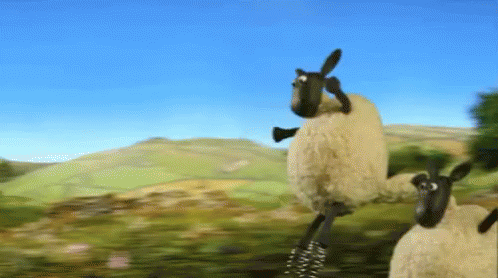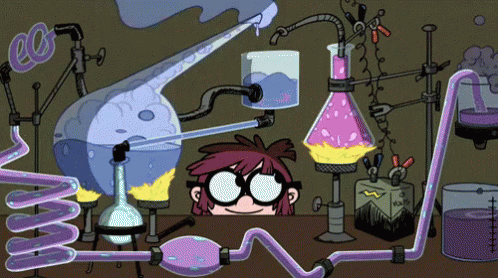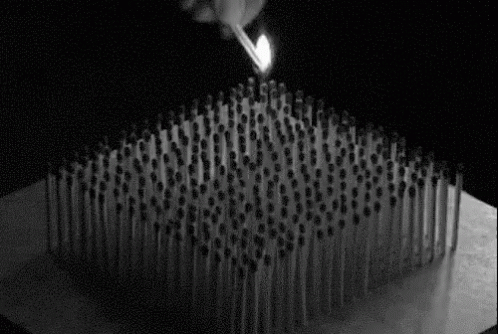A Freaking Flock of Sheep

A Bowen Theory Overview - Part 2
How is it that some people seem to handle stressful situations without raising a sweat while others (me!) turn to jelly at the slightest hint of conflict?
And how come there are some days when you can navigate life's challenges like Neo dodging bullets in The Matrix but others when you seem to trip over your own feet? One day your toddler’s screams are like water off a duck’s back, the next they’re like fingernails on the blackboard of your soul. One day your colleague's advice is helpful, the next her constant interference feels like the garbage compactor in Star Wars IV, slowly suffocating the life out of you.
Ok, that’s a bit dramatic. But here's the point:
But now for the good news.
That's where Bowen Family Systems Theory can help.
In our last blog, we explored the one basic reality of Bowen theory: “We are all part of emotional systems that influence our behaviour”. We're all swimming in the same pool.
In this blog, we will identify the two key variables that explain why we react the way we do when relationships get stressy: “In any emotional system, human behaviour is impacted by these two things: the level of anxiety in the system and the level of differentiation of self.”
What does that mean? Let’s start with a story.
Freaking Sheep
Have you ever tried to sneak up on a flock of sheep?
When I was a kid my family went on holidays to the countryside. The property we were staying on was surrounded by sheep farms and its long driveway snaked its way between sheep paddocks.

One day, as we headed up the driveway towards the house, my 8-year-old brain hit the holiday adventure jackpot. “We have sheepskin covers on our car seats!!” This sparked an obvious* question:
“How close can I get to those sheep if I wear a sheepskin seat cover as a disguise?”
So I put on my costume and in full ninja stealth mode crept towards the sheep.
However, I was still a fair way off when one sheep froze. She had sensed a threat and was scanning the tree line for any sign of danger. Foxes. Wild cats. 8-year-old boys.
Can you guess what happened next?
All the other sheep did the same. They all went on high alert. Not because they saw me coming. But because they sensed the reactivity in the first sheep. They caught her anxiety. And so now the whole flock stood like woolly statues, puncturing the air with anxious bleating.
I held my breath.
Until.
Suddenly.
One sheep freaked! Away it leapt. Closely followed by all the rest. And, within seconds, all those freaking sheep had disappeared over the hillside.

People are a lot like that.
1. The level of Anxiety
It doesn’t take much for us to get anxious.
- Your boss announces a new strategic direction
- Your partner storms in through the front door
- Your child gets in trouble at school
- Rumours of redundancies swirl through your workplace
- You receive an overdue notice on your electricity bill
And when we get anxious we react in ways that spread our anxiety around. And so other people get reactive too.
It’s like what happens when you turn up the heat on the Bunsen burner in a high school science experiment.

As the temperature rises, molecules start bouncing and bumping with more energy, and the whole system gets more reactive.
When the anxiety heats up we:
- lose perspective
- make assumptions
- cut off
- gossip
- blame
- retreat
- form silos
- vent
- avoid
- group think
- shrink down
- crack down
- take charge
- assert control
This is just what humans do when they get anxious.
So what do we mean when we speak of "anxiety"?
We're not just talking about anxiety as worry. And we're not just talking about anxiety as a mental health issue. We're talking about anxiety as a primal energy - a powerful life force that is part of human existence.
“Anxiety can be defined as the response of an organism to a threat, real or imagined. It is assumed to be a process that, in some form, is present in all living things.” - Dr Michael Kerr
Anxiety is a survival mechanism. It’s meant to protect us from harm. When a speeding car careens through an intersection you don’t have time to stop and think. You just need to move! We might call that acute anxiety.
The tricky thing is that, because humans are social animals, we depend on other people to feel safe. And so our threat response not only kicks in when cars hurtle towards us but also when our relationships feel less stable. We might call that chronic anxiety.
Dr Michael Kerr explains it like this:
“The principal generators of chronic anxiety are people’s reactions to a disturbance in the balance of a relationship system.”
When someone disagrees with us. Avoids us. Pressures us. Excludes us. Or when they are in distress. Our threat response kicks in. We react.
The problem is, the more reactive we get, the more likely it is that other people will react to our reactions. Suddenly we’ve got a nuclear fission chain reaction going off in our lounge room or our staff meeting. And, like a nuclear bomb, that kind of reactivity produces a HECK LOAD of energy.

So the first key variable is the level of anxiety -
However. We are not helpless victims of anxiety. Our big human brains give us the capacity to slow down our reactions, keep our head above the waves of emotion, and respond with a bit more thought and calm.
Bowen called this capacity differentiation of self.
2. The level of differentiation of self
This is the second key variable that determines how we respond when things get anxious. Differentiation is a notoriously tricky concept to define so I find it helpful to consider some of the different ways other people have described it.
My favourite definition of differentiation is:
“The capacity of a family system and its members to manage emotional reactivity, act thoughtfully under stress, and allow for both intimacy and autonomy in relationships” - Elizabeth Skowron et al
Kathleen Smith puts it even more simply. Differentiation is:
“The ability to put your best thinking into action while connected to other people.”
And Steve Cuss:
“The ability to be fully yourself while being fully connected to people.”
According to Cuss, being differentiated involves doing four things at once (no wonder it’s tricky!)
- Noticing your reactivity and keeping it from spilling onto others
- Noticing reactivity coming at you and keeping from catching it
- Staying emotionally connected to the other person
- Being clear on your mission and values
Yes it's tricky. But these are all things we can work on.
For example, how can I keep my reactivity from spilling onto others?
Well, my job as a coach is to help people think for themselves so they can work out what THEY want to do. My job is not to tell them what I think they should do. BUT. I love giving advice (classic eldest sibling!). And I've noticed that I often feel this tension in coaching sessions:
"Surely they will be better off if I tell them what to do."
To make it harder, sometimes a client will literally say:
“Just tell me what to do!”
But I don’t actually need an explicit invitation. Often just a slight pause in conversation is enough. A bit of awkward silence and I'm ready to jump right in:
“They want me to help them. I have to say something. I need to come up with something amazing!”
Not surprisingly, this kind of reactivity doesn’t help me to do my best work! So to keep my reactivity from spilling onto my clients I now write down some guiding principles before every session. Here's one I’ve been finding especially helpful:
“Silence is an opportunity for me to grow up.”
I truly believe that. If I can tolerate my discomfort, and wait when things get quiet, and resist my instinctive drive to take over, then I'm leaving more space for my clients to think for themselves and I’m learning to be less reactive.
The more differentiated you can be in everyday situations:
- the more you will be able to act in line with what’s important to you
- the more space you will leave for others people to hold their own opinions and make their own choices
- the more you will be able to stay connected to others when things get anxious, and
- the less you will be buffeted by the anxiety of the group
An Illustration of Anxiety and Differentiation

Imagine someone is pouring water into a glass. The water represents the level of anxiety and the glass represents the level of differentiation. Up to a certain point, the glass can contain the water without it spilling over. However, if the water level continues to rise, at some point it will exceed the capacity of the glass. And that's when things get messy.
There are a number of things to notice here:
- The amount of anxiety in any system varies - we don’t have much control over that.
- Everyone in a system has a different-sized glass - different capacity to deal with anxiety.
- Anxiety can spill over from one system into another. For instance, if you are going through a divorce or worrying about a child, it's likely you will bring some of that anxiety from your family into your workplace.
- Some days you start with your glass already half-filled and so you have less capacity than normal to manage anxiety without it spilling over onto others.
- You can learn to be a bit more thoughtful and a bit less reactive.
Start by Observing
Dr Murray Bowen noticed that when anxiety spills over it tends to do so in predictable ways. In fact, there are four common reactions to anxiety. And so:
That's what we'll be exploring in our next post.
For now, let’s recap what we’ve covered so far in our Bowen theory breakdown.
1. Bowen theory is built on One Basic Assumption: “we are all part of emotional systems that influence our behaviour.”
2. Bowen theory identifies Two Key Variables which explain how we behave when relationships get stressful; “in any emotional system, human behaviour is impacted by two things: the level of anxiety in the system and the level of differentiation of self.”
So what has this got you thinking about?
- What are the signs that tell you when your workplace or family is getting more anxious?
- How does anxiety tend to show up in your body and your behaviour?
- Can you think of someone you know who is able to tolerate a lot of stress without allowing it to spill over onto others?
- What things help you to regain your balance and react less anxiously when things get anxious?
- What do you think is the difference between trying to contain anxiety by bottling it up and trying to respond to anxiety in a more honest and thoughtful way?
*maybe not an obvious question for you but obvious for an 8-year-old boy
